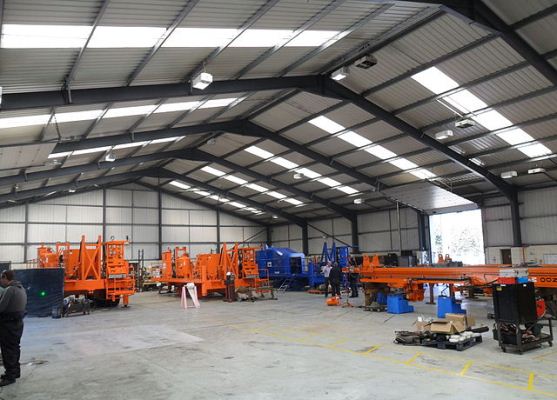 The world economy has strengthened, with monetary and fiscal stimulus underpinning a broad-based and synchronized improvement in growth rates across most countries, according to the latest Economic Outlook of the Paris-based Organisation for Economic Cooperation and Development’s (OECD).
The world economy has strengthened, with monetary and fiscal stimulus underpinning a broad-based and synchronized improvement in growth rates across most countries, according to the latest Economic Outlook of the Paris-based Organisation for Economic Cooperation and Development’s (OECD).
The OECD projects that the global economy will grow by 3.6% this year, 3.7% in 2018, and 3.6% in 2019. The projections reflect slight improvements in the global economy since the previous Interim Economic Outlook in September 2017, but also shows concerns about long-term momentum.
Annual growth of the world economy is projected to improve slightly in 2018, but remains below the pre-crisis period and that of past recoveries. Longer-term challenges inhibit stronger, more inclusive, and more resilient economies, said the report.
The outlook noted persistent effects of prolonged sub-par growth on private sector performance including investment, trade and productivity.
“Employment rates are now above pre-crisis rates in many OECD economies and unemployment is falling, but this has yet to produce solid real wage gains. In the absence of a clear sign of change in underlying trends, growth across the OECD is projected to weaken in 2019,” it added.
“Growth has picked up momentum and the short-term outlook is positive, but there are still clear weaknesses and vulnerabilities,” said OECD Secretary-General Angel Gurria. “There is a need to focus structural and fiscal action on boosting long-term potential as monetary policy support is reduced. Countries should implement reform packages that catalyze the private sector to promote productivity, higher wages and more inclusive growth.”
In the United States, growth is estimated at 2.2% in 2017, rising to 2.5% in 2018, then dropping back to 2.1% in 2019.
The euro area is projected to grow at a 2.4% rate in 2017 and a 2.1% pace in 2018—upward revisions from previous projections driven by stronger growth in key European countries—before slowing to a 1.9% pace in 2019.
Growth in Japan is projected at 1.5% for 2017, which is slightly below the forecast in the September 2017 Interim Economic Outlook, and to remain close to 1% in 2018 and 2019 as fiscal consolidation resumes and the decline in the working-age population accelerates.
The Canadian economy is bouncing back to 3% growth rate this year, before slowing to 2.1% in 2018 and 1.9% in 2019 as policy stimulus is withdrawn.
Expansion in the major emerging market economies is improving, on the back of renewed infrastructure investment in China and recovery from recession in major commodity-exporting economies, but remains softer than in the past.
Growth in China is projected at 6.8% in 2017, 6.6% in 2018, and 6.4% in 2019, partly reflecting the ongoing rebalancing in China’s growth model.
In India, growth is projected at 6.7% in 2017 and 7.0% in 2018, before picking up to a 7.4% rate in 2019, thanks to reforms that are expected to boost investment, productivity and growth.
Russia is rebounding from recession, and is projected to grow by 1.9% in 2017 and 2018 and 1.5% in 2019. Brazil is also expected to exit recession, with a 0.7% growth rate in 2017, 1.9% in 2018 and 2.3 % in 2019.
“The global economy is flying low and at risk of financial turbulence,” said OECD chief economist Catherine Mann. “The only strategy is to pursue an integrated policy approach that will balance actions to boost growth, mitigate risks in the financial sector and improve resilience. We cannot afford to be complacent and assume that today’s economy is as good as it gets—future generations have a right to ask for better.”
Photo: Energold-company





